Veloce Racing is pushing the boundaries in developing the next-generation electric race car, striving to outpace the competition and achieve unprecedented performance. Join us in crafting the future of Formula Student vehicles and explore the cutting-edge technology that drives our open-wheeler to new heights.
As part of our team, you'll have the opportunity to work in a variety of areas and domains, including vehicle design, aerodynamics, powertrain, transmission and more. Our ultimate goal is to design faster, more efficient cars that lead the pack both nationally and internationally. We welcome students from all engineering disciplines to become a part of our legacy and contribute to our continued success.
Aerodynamics

Our Aerodynamics Department enhances on-track performance through precision CAD modeling in SolidWorks, followed by advanced CFD simulations using Siemens Simcenter Star-CCM+ and ANSYS. This process optimizes airflow and cooling systems to balance downforce and drag. We then translate these sophisticated designs into high-performance reality using carbon-fiber composites, ensuring superior aerodynamics and speed.
Brakes

As a brake systems engineer, you will design, develop, and test critical components like brake discs, calipers, and master cylinders. Using CAD software and simulation tools, you will create high-performance brake systems that meet stringent safety and performance standards. Collaborating with manufacturing partners, you will oversee production and conduct real-world testing to validate designs.
CAE

The CAE (Computer-Aided Engineering) subsystem is the computational core that drives innovation in our race car design. We harness the power of advanced software and simulation to design, analyze, and optimize every component and system before they ever see the physical world. By leveraging CAE, we significantly reduce development time, minimize physical prototypes, and achieve superior performance on the racetrack.
Chassis

Students will gain practical experience in designing chassis structures. A chassis is the car's backbone, housing components such as the powertrain, suspension, brakes, and body. Effective chassis design prioritizes ergonomics, safety compliance, lightweight construction, and rigidity. Students will explore both space frame and monocoque chassis configurations.
Media & Marketing

Our team comprises dedicated marketing and media divisions. The marketing team actively seeks sponsorships to fund vehicle development. The media team generates essential reports for static events, manages social media, and creates engaging content using tools like Photoshop and Blender. These combined efforts enhance our team's visibility and resource acquisition.
Transmission

Our transmission system efficiently transmits power from the motor to the driven wheels, enhancing vehicle performance. We design custom parts using advanced software tools like SolidWorks, Kiss-Soft, and MATLAB. This approach ensures a highly efficient and reliable transmission assembly, optimized for maximum performance and durability.
Suspension

The suspension module exemplifies the integration of precision engineering and high-performance dynamics, aiming for maximum grip and stability by prioritizing the 3C's: control, comfort, and contact. As a team member, one uses kinematic simulations to refine suspension designs, create key components, and enhance knowledge of vehicle dynamics and structural design. Hands-on experience with MATLAB, CATIA, SolidWorks, and various simulation tools will drive innovative solutions for our Formula Student Competition success.
Steering

The steering system showcases the blend of precision engineering and dynamic performance, focusing on stability and minimizing bump steer through precise geometry adjustments. As a team member, one develop key components, refine steering designs, and gain expertise in vehicle dynamics and structural design. Utilizing MATLAB, CATIA, SolidWorks, and various simulation tools effectively enables to develop creative solutions, ultimately contributing to the team's success in the Formula Student Competition
Electronics

The Electronics subsystem is critical for Formula Student vehicle performance and safety. It encompasses power distribution, data acquisition, control systems, safety features, and integrating custom circuits and harnessing sensors, we optimize vehicle performance, enhance driver safety, and gather crucial data for analysis. This subsystem is essential for overall vehicle success.
Motor and Motor Controller

The motor is the heart of an electric vehicle, requiring precise control, and tuning for optimal performance. We focus on developing a high-performance powertrain through rigorous research and development. By creating real-time models and simulations, we optimize motor parameters for maximum torque, power, and efficiency. Our goal is to extract the full potential of the electric powertrain.
Software Integration

This subsystem focuses on data acquisition and driver interface. By integrating sensors with a controller, we collect vital vehicle data, analyzed through software like MATLAB to optimize performance. A Python-based driver display provides real-time information, enhancing driver decision-making and overall vehicle efficiency. This subsystem offers opportunities for programming enthusiasts to contribute to the project.
Battery and BMS

We design and optimize high-performance battery packs, prioritizing thermal management, packaging, and safety. Students gain hands-on experience in managing high-voltage systems. Advanced software tools like MATLAB, ANSYS, SolidWorks, and HyperWorks support our efforts in maximizing energy density and pack efficiency while meeting stringent safety standards.
























